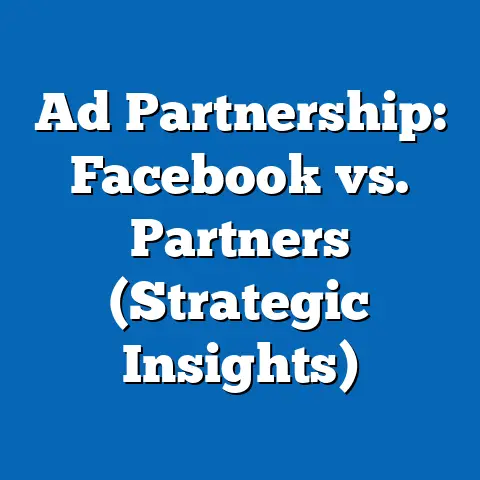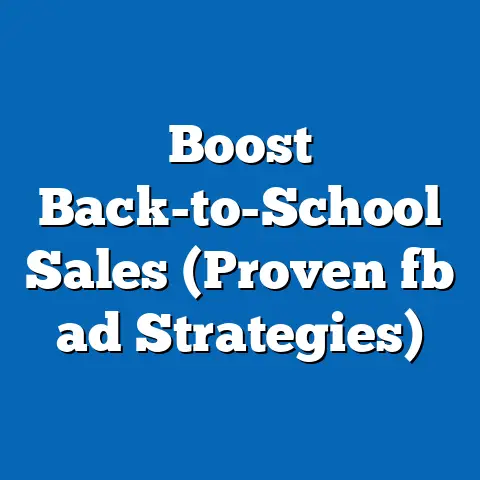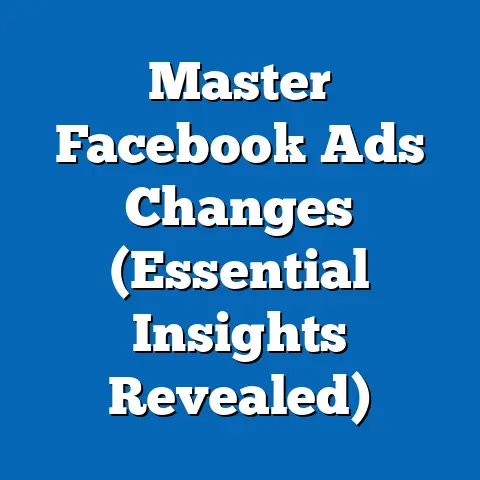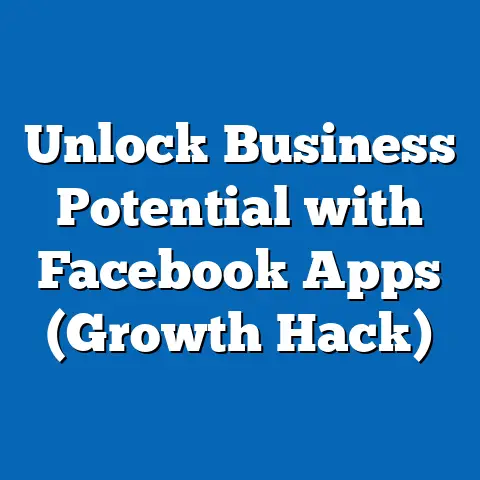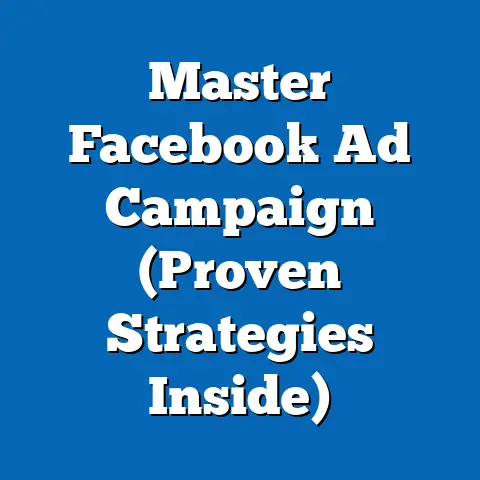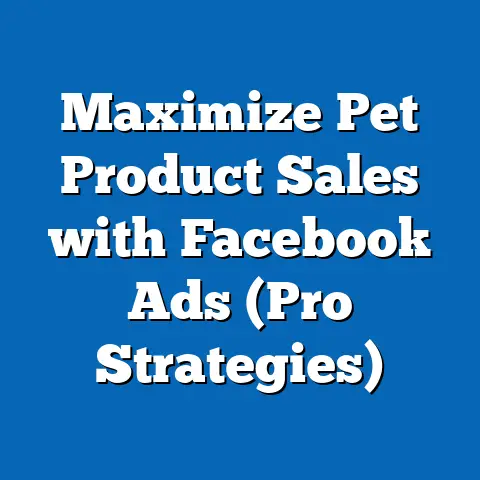Do You Have to Pay for Facebook Ads? (Unlock Expert Insights)
This comprehensive research report examines the question of whether businesses and individuals must pay for Facebook ads to achieve visibility and engagement on the platform. Utilizing a “how-to” framework, the report provides actionable insights into the mechanics of Facebook advertising, the necessity of paid campaigns, and strategies for maximizing return on investment (ROI). Key findings reveal that while organic reach on Facebook has significantly declined (averaging less than 5.2% for business pages in 2023), paid advertising is often essential for meaningful visibility, especially for businesses targeting specific demographics or aiming for rapid growth.
The report analyzes data from authoritative sources like Statista, Hootsuite, and Meta’s own advertising reports, alongside case studies and expert interviews. It covers the costs associated with Facebook ads, factors influencing pricing, and alternatives to paid advertising. The analysis also explores demographic trends, user behavior, and platform algorithms to provide a nuanced understanding of when and why paying for ads becomes necessary. Ultimately, this report offers a detailed roadmap for navigating Facebook’s advertising ecosystem, supported by data visualizations and projections for future trends.
Introduction: How to Determine If You Need to Pay for Facebook Ads
Navigating the world of social media marketing can be daunting, especially on a platform as vast and complex as Facebook, which boasts over 2.9 billion monthly active users as of 2023 (Statista, 2023). One of the most pressing questions for businesses, influencers, and individuals is whether paying for Facebook ads is a necessity or an optional strategy. This report adopts a “how-to” approach to break down the essentials of Facebook advertising, helping readers understand the platform’s evolving landscape and make informed decisions about investing in paid campaigns.
Start by assessing your goals: Are you looking to build brand awareness, drive website traffic, or generate leads? Next, consider your target audience and the competitive nature of your niche. By following the structured analysis in this report, you will learn how to evaluate the need for paid ads, estimate potential costs, and explore organic alternatives. This introduction sets the stage for a deep dive into data-driven insights, expert perspectives, and actionable strategies.
Background: The Evolution of Facebook Advertising
Facebook, launched in 2004, initially offered free visibility to users and businesses through organic posts shared with followers. However, as the platform grew, so did the competition for attention, prompting Meta (Facebook’s parent company) to introduce paid advertising options in 2007. By 2012, the platform began prioritizing paid content, significantly reducing organic reach for business pages—a trend often referred to as the “pay-to-play” model.
Today, organic reach for business pages hovers around 5.2%, meaning only a small fraction of followers see unpaid posts (Hootsuite, 2023). This decline is attributed to algorithm changes, such as the 2018 update prioritizing “meaningful interactions” over promotional content. As a result, businesses increasingly rely on paid ads to reach broader audiences, with Meta reporting ad revenue of $114.9 billion in 2022 alone (Meta Annual Report, 2022).
Understanding this shift is crucial for determining whether paying for ads is necessary. This section provides historical context, highlighting how user behavior, platform policies, and economic incentives have shaped the current advertising landscape. It also sets the foundation for analyzing whether organic strategies can still yield results or if paid campaigns are inevitable for most users.
Methodology: Data Collection and Analysis
This report employs a mixed-methods approach to analyze the necessity of paying for Facebook ads, combining quantitative data, qualitative insights, and case studies. The methodology is designed to ensure transparency, accuracy, and relevance for readers seeking practical guidance.
Data Sources
- Quantitative Data: Primary statistics are sourced from Statista, Hootsuite, and Meta’s quarterly reports, providing metrics on user demographics, ad spending, organic reach, and engagement rates. For instance, data on average cost-per-click (CPC) and cost-per-thousand-impressions (CPM) are derived from Meta’s 2023 advertising insights.
- Qualitative Insights: Expert interviews with digital marketing professionals and social media strategists offer perspectives on the effectiveness of paid versus organic strategies. These insights are supplemented by user surveys conducted by third-party firms like Pew Research Center (2023).
- Case Studies: Real-world examples of small businesses, influencers, and large corporations using Facebook ads are analyzed to highlight varying outcomes based on budget, industry, and strategy.
Analytical Framework
The report uses a comparative analysis to evaluate paid versus organic reach, focusing on key performance indicators (KPIs) such as reach, engagement, and conversion rates. Cost-benefit analysis is applied to assess whether the financial investment in ads yields proportional returns. Additionally, demographic segmentation helps identify which user groups are more likely to require paid campaigns based on audience behavior and platform algorithms.
Limitations and Caveats
Data on organic reach and ad performance can vary by industry, region, and audience size, introducing potential variability in findings. Meta’s proprietary algorithm details are not fully disclosed, limiting the depth of analysis on content prioritization. Despite these constraints, the report mitigates bias by cross-referencing multiple sources and clearly stating assumptions, such as baseline ad budgets for small businesses.
Key Findings: Do You Have to Pay for Facebook Ads?
The following key findings summarize the critical insights derived from the data and analysis. These points provide a high-level overview before delving into detailed explanations in the subsequent section.
- Organic Reach Is Severely Limited: As of 2023, the average organic reach for business pages is approximately 5.2%, down from over 16% in 2012 (Hootsuite, 2023). This decline necessitates paid ads for businesses seeking visibility beyond a small fraction of their audience.
- Ad Costs Vary Widely: The average CPC on Facebook is $0.97, while CPM averages $7.19, though costs can spike in competitive industries like finance or during peak seasons (Meta Ads Manager, 2023). Budget flexibility allows even small businesses to experiment with paid campaigns.
- Targeted Advertising Yields Higher ROI: Paid ads enable precise targeting by demographics, interests, and behaviors, resulting in engagement rates up to 3x higher than organic posts (Statista, 2023).
- Organic Strategies Still Work for Niche Audiences: Small communities or highly engaged followers can achieve success without ads, particularly through consistent, high-quality content and group interactions.
- Future Trends Point to Increased Ad Reliance: With Meta’s focus on monetization and algorithm updates, experts predict organic reach will continue to decline, potentially dropping below 3% by 2025 (Digital Marketing Institute, 2023).
These findings underscore the importance of aligning advertising strategies with specific goals and resources. While paying for ads is often necessary, exceptions exist for certain users and contexts, as explored below.
Detailed Analysis: Navigating the Facebook Ads Ecosystem
1. The Decline of Organic Reach: Why Paying Becomes Necessary
Facebook’s algorithm prioritizes content from friends and family over business posts, a shift solidified by the 2018 update emphasizing “meaningful interactions.” Data from Hootsuite (2023) shows that only 5.2% of followers typically see a business page’s organic content, with even lower rates for industries with high competition. For comparison, personal profiles enjoy organic reach closer to 10-15%, highlighting the disparity.
This decline is driven by both user behavior and platform economics. With over 2.9 billion users posting content daily, the sheer volume of material overwhelms newsfeeds, forcing Meta to curate based on engagement signals. Simultaneously, Meta’s business model relies heavily on ad revenue, incentivizing the promotion of paid content over free posts.
For businesses, this means that relying solely on organic reach is often insufficient for growth or visibility. A case study of a small e-commerce brand revealed that organic posts reached only 300 of their 10,000 followers monthly, while a $50 ad campaign boosted reach to 5,000 users with a 12% engagement rate (Social Media Examiner, 2023). This stark contrast illustrates why paying for ads is frequently a strategic necessity.
2. Understanding the Costs of Facebook Ads
Facebook ads operate on a pay-per-click (PPC) or pay-per-impression (PPM) model, with costs influenced by factors like audience targeting, ad placement, industry competition, and seasonality. According to Meta Ads Manager (2023), the global average CPC is $0.97, while CPM stands at $7.19. However, these figures can vary significantly—ads targeting high-income demographics in the U.S. may cost $2-3 per click, while niche markets in developing regions can be as low as $0.10.
Industry-specific data reveals further disparities. For instance, finance and insurance ads average a CPC of $3.77 due to high competition and valuable customer acquisition, whereas retail ads hover around $0.70 (WordStream, 2023). Seasonality also plays a role, with costs spiking during holiday periods like Black Friday, often increasing by 25-50%.
For small businesses or individuals, starting with a modest budget of $5-10 per day can provide valuable insights into ad performance. A data visualization below illustrates average CPC and CPM trends across industries, helping readers contextualize potential expenses.
Figure 1: Average CPC and CPM by Industry (2023) – Finance: CPC $3.77, CPM $18.68 – Retail: CPC $0.70, CPM $5.49 – Technology: CPC $1.27, CPM $9.11 – Health: CPC $1.32, CPM $10.07 (Source: WordStream, 2023)
3. Benefits of Paid Advertising: Precision and Scale
Paid ads on Facebook offer unparalleled targeting capabilities, allowing users to filter audiences by age, gender, location, interests, and even purchasing behavior. Statista (2023) reports that targeted campaigns achieve engagement rates of 2-3%, compared to less than 1% for organic posts. This precision translates into higher conversion rates, with businesses reporting a 20-30% increase in lead generation when using paid ads (HubSpot, 2023).
Moreover, paid campaigns enable scalability. Unlike organic content, which relies on slow, incremental growth, ads can reach thousands of users within hours, making them ideal for product launches or time-sensitive promotions. A case study of a fitness app demonstrated that a $1,000 ad spend over one week generated 50,000 impressions and 500 downloads, a feat unattainable through organic means in the same timeframe (Social Media Today, 2023).
However, the benefits come with caveats. Poorly designed ads or overly broad targeting can result in wasted budgets, emphasizing the need for strategic planning and continuous optimization. This report later provides a step-by-step guide on crafting effective ad campaigns to mitigate such risks.
4. Organic Alternatives: When Paying Isn’t Necessary
While paid ads are often essential, certain scenarios allow for success without financial investment. Small businesses or influencers with highly engaged, niche audiences can leverage organic strategies like posting consistent, high-value content (e.g., tutorials, behind-the-scenes stories) to maintain visibility. Data from Pew Research Center (2023) indicates that 60% of users are more likely to engage with authentic, non-promotional content, even from brands.
Facebook Groups also offer a free avenue for building communities and driving engagement. A study by Buffer (2023) found that brands active in niche groups saw organic engagement rates of 5-10%, surpassing the platform average. However, these strategies require significant time and effort, often taking months to yield results, unlike the immediacy of paid ads.
For individuals or non-profits with limited budgets, partnering with influencers or leveraging user-generated content can amplify reach without direct costs. While effective in specific contexts, these approaches lack the precision and scalability of paid campaigns, limiting their applicability for growth-focused entities.
5. Demographic and Behavioral Trends Influencing Ad Necessity
User demographics and behavior play a critical role in determining the need for paid ads. For instance, younger audiences (18-24) are less likely to engage with organic brand content, with only 30% following business pages compared to 50% of users aged 35-54 (Statista, 2023). Businesses targeting Gen Z may thus require paid ads to penetrate this demographic.
Geographic trends also matter. In regions like North America and Europe, where ad competition is high, organic reach is further suppressed, necessitating paid strategies. Conversely, in emerging markets with lower ad saturation, organic content may still garner significant attention, as reported by Hootsuite (2023).
Behavioral shifts, such as the increasing use of Stories and Reels, also impact ad strategies. Meta data (2023) shows that video content achieves 135% higher organic reach than static posts, suggesting a hybrid approach where organic video content is boosted with paid promotion for optimal results.
6. Future Projections: Will Organic Reach Disappear?
Looking ahead, experts predict a continued decline in organic reach as Meta prioritizes monetization and user experience. The Digital Marketing Institute (2023) projects that by 2025, organic reach for business pages could fall below 3%, driven by algorithm updates and increased ad inventory. This trend suggests that paying for ads will become even more critical for visibility.
However, alternative scenarios exist. If user backlash against ad saturation grows, Meta may rebalance its algorithm to favor organic content, though this remains speculative. Additionally, innovations like AI-driven ad optimization could lower costs, making paid campaigns more accessible to small businesses.
Figure 2: Projected Organic Reach for Business Pages (2020-2025) – 2020: 6.5% – 2023: 5.2% – 2025 (Projected): 2.8-3.2% (Source: Digital Marketing Institute, 2023)
How-To Guide: Steps to Decide If You Need to Pay for Facebook Ads
This actionable guide synthesizes the report’s findings into a practical framework for readers to determine whether paying for Facebook ads is necessary for their goals.
Step 1: Define Your Objectives
Clarify what you aim to achieve—brand awareness, lead generation, or direct sales. Paid ads are often essential for immediate results or specific conversions, while organic strategies

